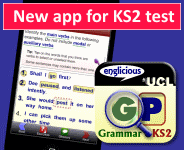Glossary: international phonetic alphabet
Explanation
A universally recognised alphabet for the transcription of human speech sounds. It features a symbol for each sound of the world's languages.
Englicious contains many resources for English language in schools, but the vast majority of them require you to register and log in first. For more information, see What is Englicious?

